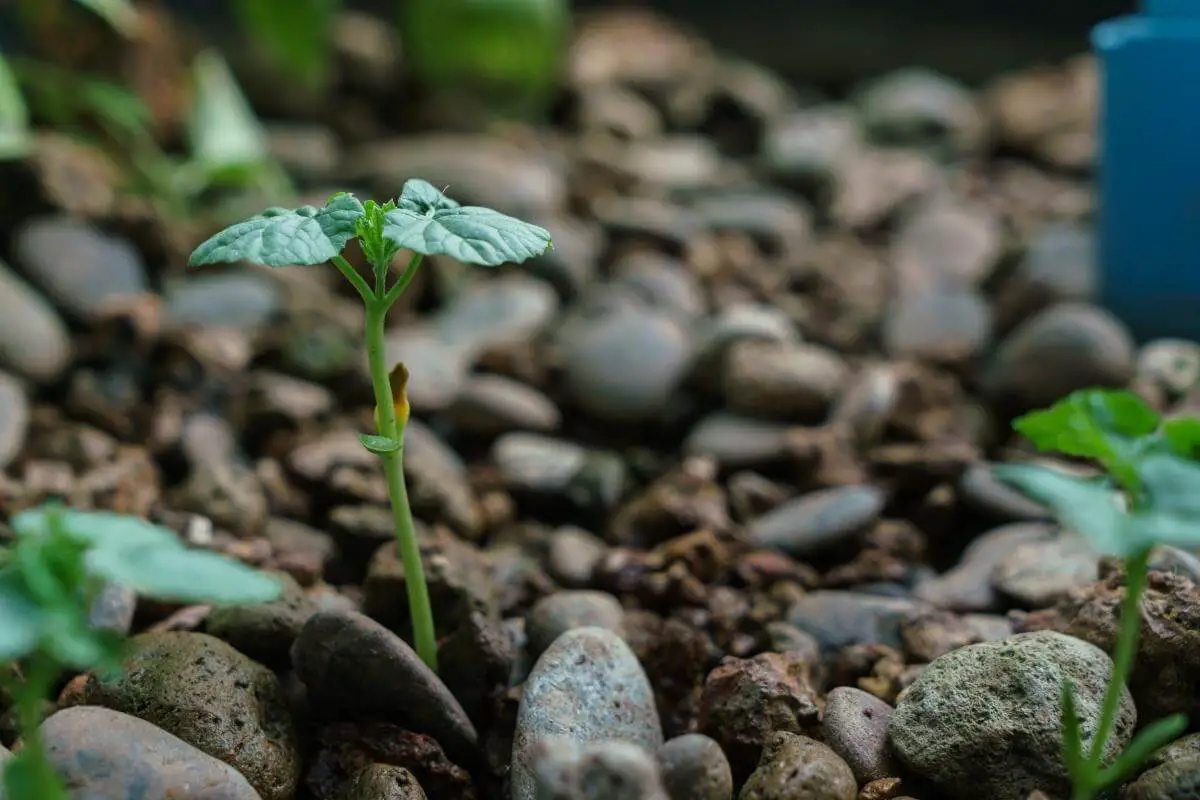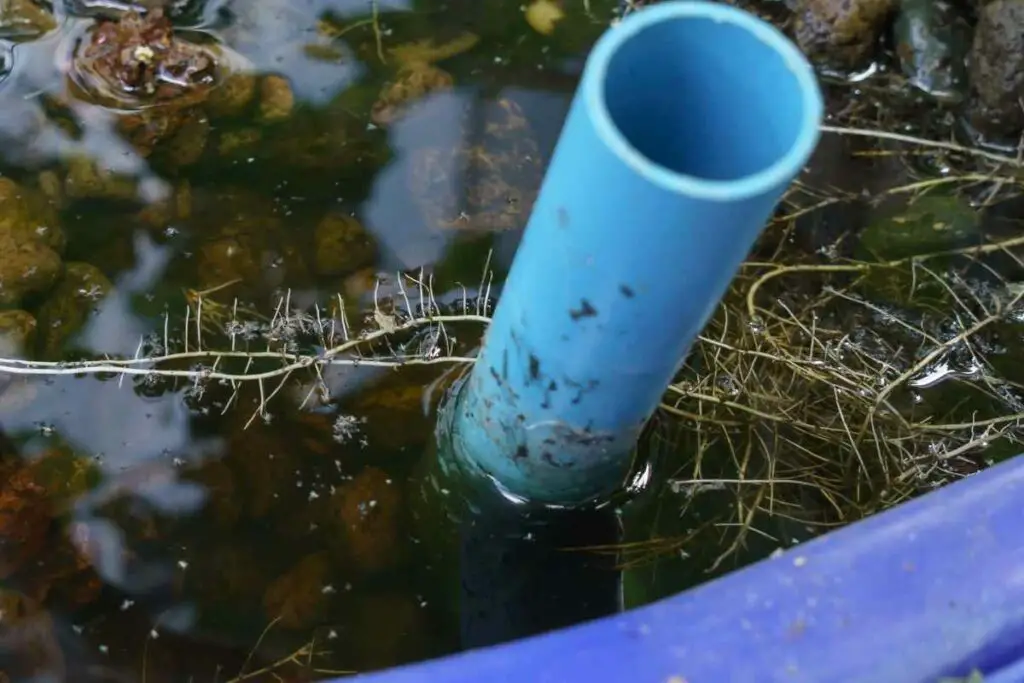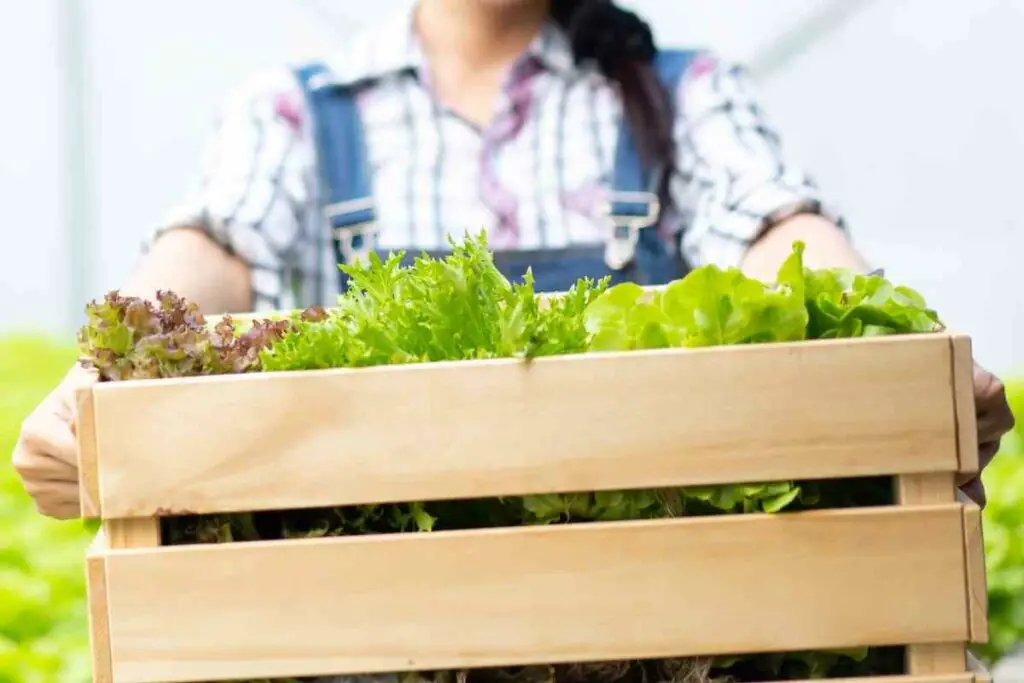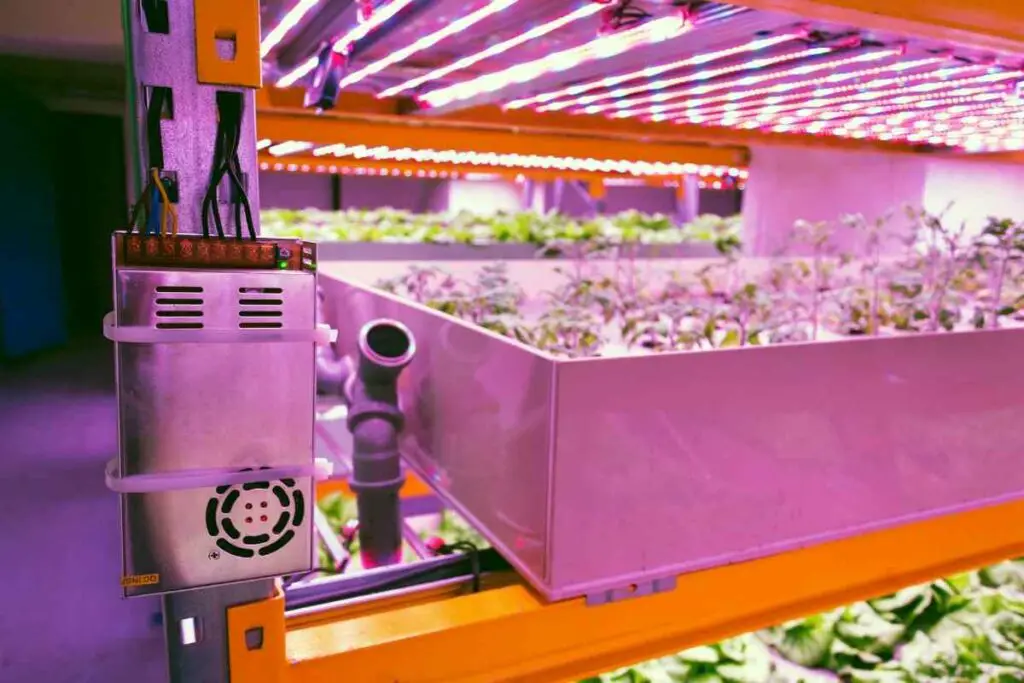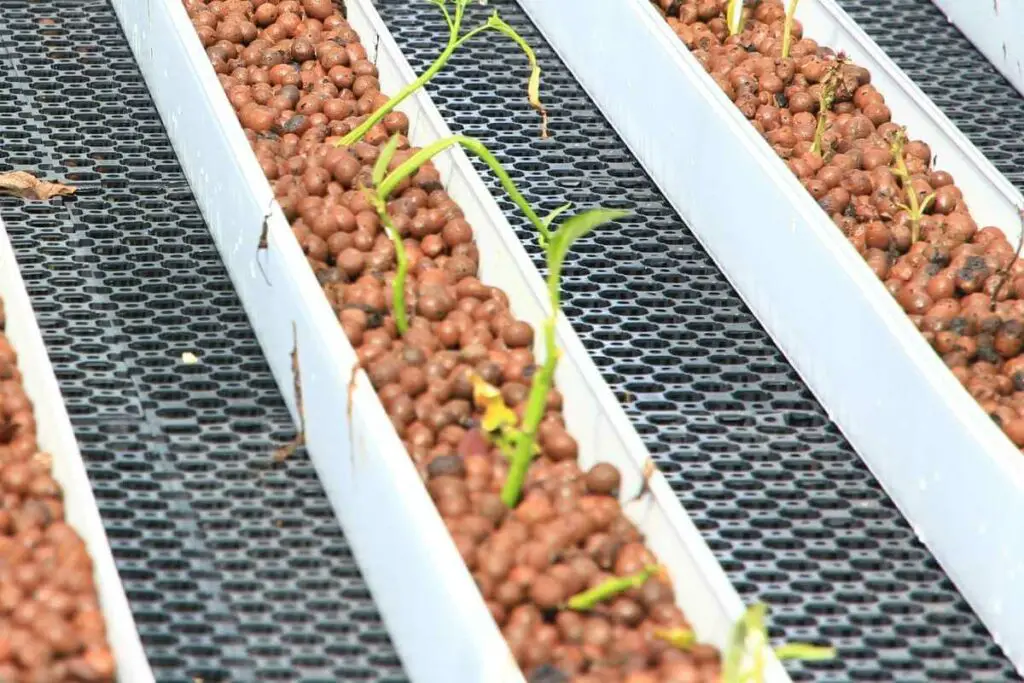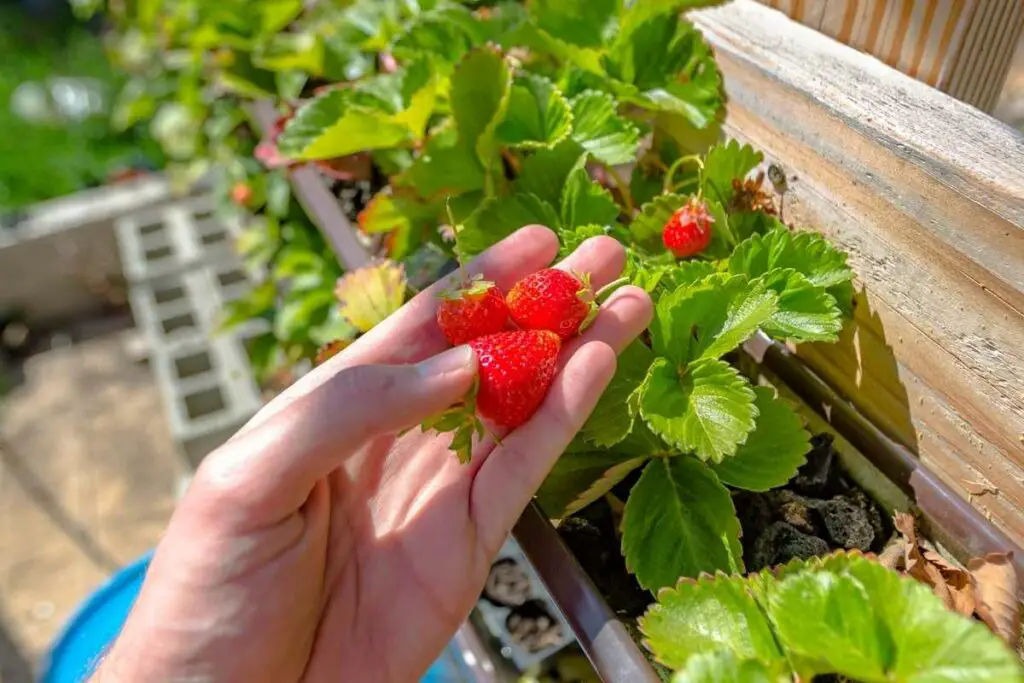One of the major differences between aquaponics and traditional gardening is the utilization of grow bed material.
In traditional gardening, the soil is used. However, when it comes to aquaponics, there are several types of grow bed material that can be used.
Therefore, choosing the appropriate grow bed material is critical to planning your aquaponics setup.
There are several factors that you need to consider when choosing your aquaponics grow bed material. First, it should be pH neutral. Second, it should be safe for you to touch. Third, it shouldn’t be too light or too heavy. Fourth, it should not cost you a lot of money.
If you’re new to the world of aquaponics, you must understand what grow bed material is, factors to consider when choosing that material, and some of the most commonly used grow bed material.
We will explore each of these areas below.
What is Aquaponics Grow Bed Material?
As we briefly mentioned, aquaponics involves growing plants without soil.
Instead, natural or synthetic materials are used to support the crops.
This ensures that the roots are anchored properly, and seeds are able to germinate safely within the material instead of in the ground.
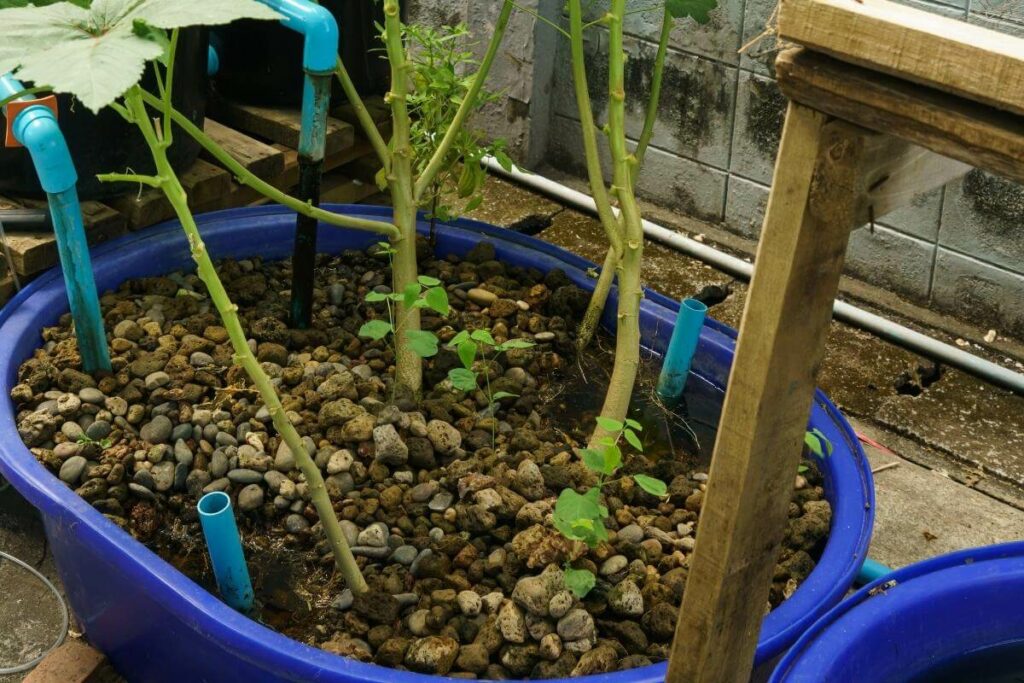
The grow bed material helps plants soak in nutrients and keeps them from falling over during inclement weather.
Additionally, they provide an area for vital bacteria to grow. The grow bed material is a critical part of the foundation of this form of gardening.
This means that before you start planning your system, give yourself time to learn more about your options.
However, you should also be aware that not all methods of aquaponics require grow bed material.
Things to Consider When Selecting Grow Bed Material
There are lots of grow bed material options on the market, and while many prefer non-organic materials, there are some that prefer to use organic.
Now that you have an understanding of what grow bed material does, let’s take a closer look at things you should consider when making your selection.
pH Neutral
One of the steps on the maintenance checklist for an aquaponics system is to make sure that you keep an eye on the pH level.
When choosing grow bed material, keep in mind that some materials can have an effect on the pH level. This can potentially hurt your fish and delay plant development.
If your grow bed material is pH neutral, it will be easier to manage the pH level of the system.
Why pH Is So Important?
It is vital to regulate the pH levels in your aquaponics system. This aspect is so crucial that it needs to be checked daily. Ideally, you should keep fish and plant crops that share a similar range.
That said, it’s worth noting that some grow media can change the pH levels in your aquaponics system. The result of these changes is usually retarded plant growth and poor health or even death of fish.
One such medium is limestone, as it increases the pH way beyond the recommended levels.
Instead: It’s advisable to test your preferred grow media with vinegar before you introduce it to your system.
Safe to Touch
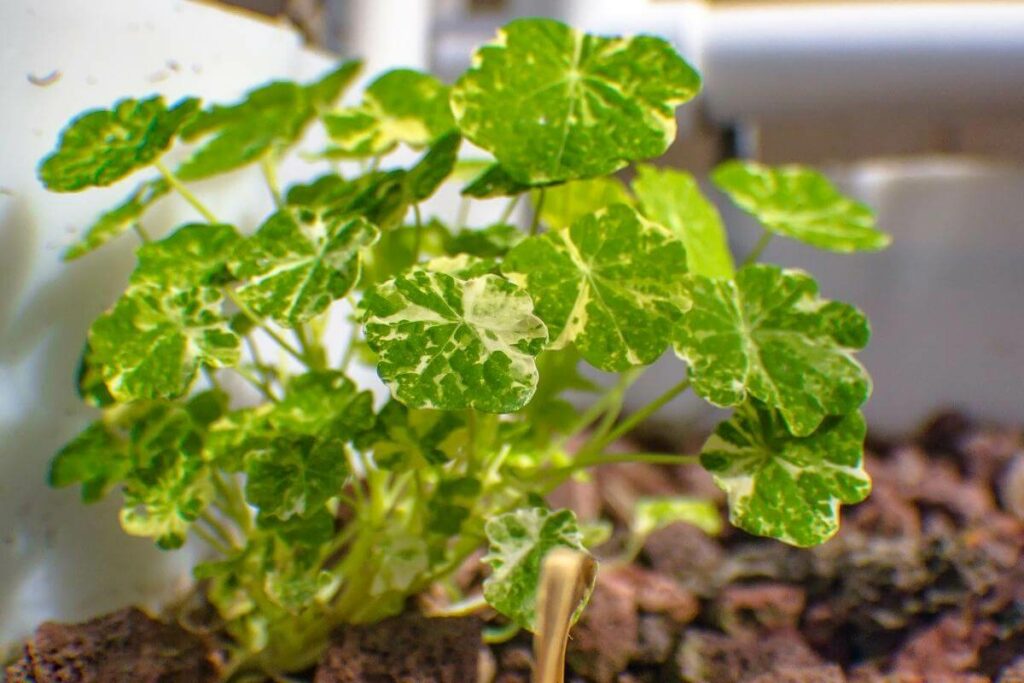
Since you will be touching the grow bed material, it’s critical that you make sure it’s safe to touch.
Plus, ensure that it’s easy to work with and won’t cause any injuries to your hands.
Weight
The weight of the grow bed material is important, especially if you have a smaller or flimsy setup.
When choosing your grow bed material, you must make sure that it’s not too bulky/heavy, or you may have trouble managing it.
Plus, if it’s too heavy, it could end up damaging the garden bed.
Since a larger setup is typically going to be much heavier already, choose a material that is light to medium weight.
When you spread it, make sure you spread the weight evenly across the bed.
Finally: Depending upon whether the material is coarse or fine, it could cause issues by clogging the pipes in the system.
Cost
Cost is definitely a factor that should be taken into consideration, especially if you’re just getting started.
Some of the materials are going to be more budget-friendly, and others will be more expensive. Consider your budget and try to stay within that.
Of course, you should also keep in mind that some materials can be reused, so though it may cost more upfront, it will ultimately pay for itself since you won’t need to replace it as often.
Ensure that you explore multiple options to avoid spending too much that you lack funds for other crucial elements.
For Instance: gravel is cheap because it’s readily available in many areas, while hydroton is expensive because it’s rare.
Ease of Handling
You have to use your hands when placing the grow medium in your aquaponics garden. The process itself takes time, meaning that you should go for a medium that is easy on your hands.
For example, many growers like lava rocks because of their large size and high porosity compared to other options.
On the downside, their sharp edges increase the risk of getting cut when handling them if you’re not careful.
The best way to prevent such hazards is to opt for alternatives that are easy on the hands or wearing a pair of gloves.
Good Surface Area
As mentioned earlier, one of the primary functions of grow media is to provide a surface area for the growth of bacteria.
Generally, a larger surface area means more bacteria and a faster conversion of fish waste (ammonia) to nitrates.
Size
Size is another important consideration when choosing a grow media. When the media is too small, your aquaponic systems will clog.
If it’s too huge, there will be air gaps that slow down the growth rate of your crops.
The recommended size range is ½ to ¾ inches, so this provides adequate support and space for colonizing bacteria.
Decomposition
Avoid purchasing a grow media that will decompose during or after the completion of a growing cycle.
This is because decomposition reduces the surface area for the bacteria and affects the synthesis of nitrates.
If they accumulate for extended periods, they can block your system and create anaerobic conditions. This can significantly affect the health of your crops and fish.
Grow Bed Material Options
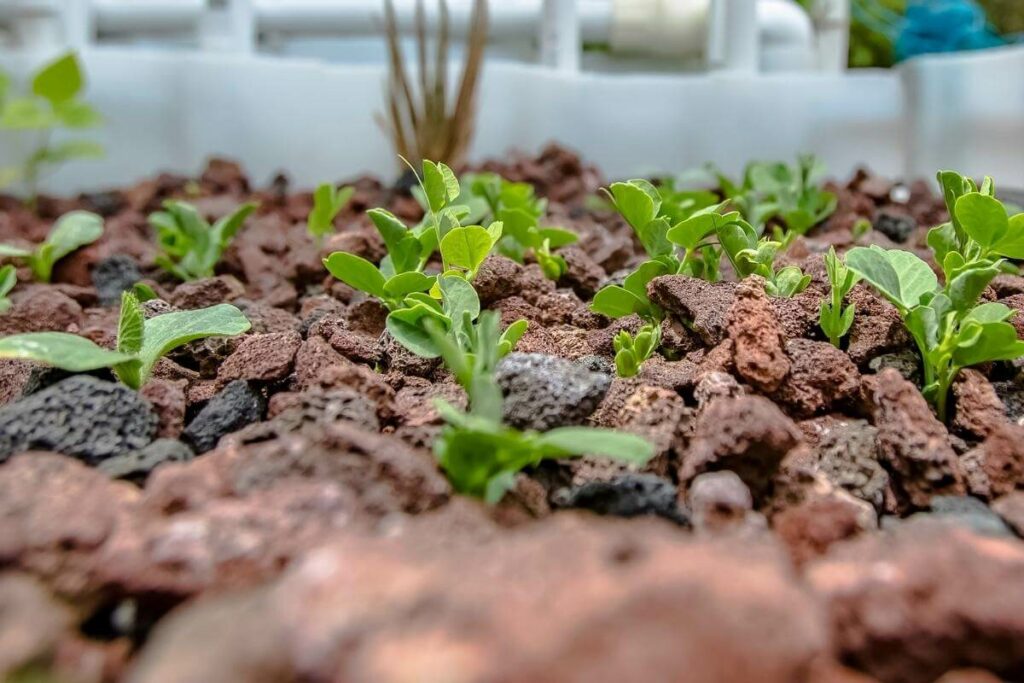
Now that you know what you should consider when choosing your grow bed material, let’s take a look at some of the options.
Keep in mind that while these are considered the best ones, each of them has its own advantages and disadvantages.
Remember This: No grow bed material is completely perfect.
Coconut Fiber (Coco Coir)
Coconut fiber growth mediums are made using coconut husks. This grow media is also available in form chips and pith.
The standout property of coconut fiber is its similarity to soil. It can filter the nutrients in your aquaponics system such that your plants don’t get too little or too much, both of which have adverse effects.
Moreover, coco coir is pH neutral and has an excellent oxygen to water ratio. As such, you can grow a vast range of crops without worrying about acidity or alkalinity.
This medium also excels at water retention, allowing you to skip a day or two without watering.
On the downside, this material has poor drainage. The solution to this challenge is mixing it with other grow media.
Pros
- Eco-friendly
- Excellent aeration
- Outstanding water retention
- Organic material
Cons
- Poor drainage
- Uncompressed after multiple growing cycles
Lava Rock
Lava rock is what is formed when hot lava cools rapidly.
If you want your grow bed material to have lots of surface area, this is a great choice.
There are air pockets inside these rocks, which provide additional surface area for bacteria to grow. Plus, they are pH neutral, lightweight, and provide good drainage.
However, they do have sharp edges that can cut your hands or harm the root system of your plants.
If you do choose lava rocks, they should be soaked for a few days to prepare them for cleaning.
Clay Pebbles
Like lava rocks, clay pebbles offer plenty of surface area and are pH neutral.
While this grow bed material is only appropriate for certain plants, there are many on that list.
Clay pebbles have tiny holes that allow them to hold adequate water while allowing sufficient drainage and providing good airflow.
While clay pebbles are a great option for grow bed material, they are not the most budget-friendly option.
Additionally, they tend to float during the first use, which can impede your system.
Rockwool
Rockwool is a combination of coke, limestone and volcanic rock melted at high temperatures. The molten solution is molded into fibers and later changed into blocks and slabs.
The result is a grow media that is sterile and has good water retention and aeration. Even better, it is long-lasting and reusable, provided you disinfect and rinse it thoroughly after every growing cycle.
One of the most significant shortcomings of this material is that it is non-biodegradable. If it becomes unusable, you need to find proper ways of disposing it.
Also, some types of rockwool have a high pH that they acquire from the bonding agents used for making them. You need to monitor your system regularly if you choose it as your grow media.
Lastly, rockwool is highly irritating, as it can make your eyes, lungs, and skin itchy. For this reason, it’s advisable to wear protective gear when handling this material.
Lightweight Expanded Clay Aggregates
When you heat clay pebbles in special conditions, you get lightweight expanded clay aggregates. These are highly porous and have excellent aeration.
Due to their poor water retention, clay aggregates allow optimal air flow throughout the grow media without affecting moisture levels.
The problem with this is that your submersible pump might become defective, causing your plants to wilt due to a lack of water.
For the reason mentioned above, you need to check your system continually for any leaks.
Pros
- High-quality aeration
- High porosity
- Reusable and sustainable
Cons
- Poor water retention
Oasis Cubes
Oasis cubes are made using floral foam that looks like a sheet. As the name suggests, the grow media looks like cubes, each of which contains air, nutrients and water needed to keep your plants alive.
Notably, most farmers use oasis cubes during the germination phase and when planting cuttings.
It is rare to see people using this material throughout the growing cycle.
Oasis cubes are pH neutral and have above average aeration and water retention. Even better, their open cell structure provides a conducive environment for rooting.
Pros
- Affordability
- Good aeration and water retention
Cons
- Inorganic
- Unsustainable
- Not suited beyond germination and rooting
Sand
Sand is one of the most abundant materials on earth. It’s highly versatile, as it’s used for building, growing, etc. More importantly, it’s affordable.
Because it’s made of fine particles, using sand as a grow media guarantees fair water retention. It’s ideal when used as a starting medium in the germination phase.
However, it is heavy and has poor aeration, meaning that you have to mix it with other media like perlite or coconut to increase its effectiveness.
Pros
- Affordable
Cons
- Bulky
- Poor aeration
- Small particles can block your system
Expanded Shale
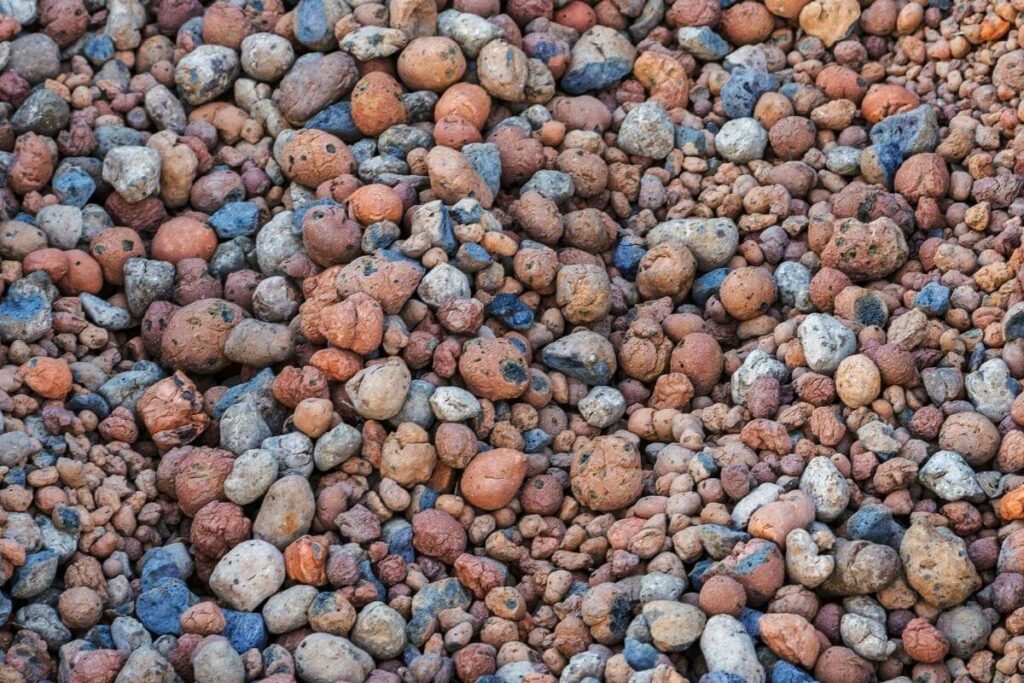
Expanded shale is similar to lava rock in that it contains air pockets which provide additional surface area for bacteria to grow.
It’s created from the crushing and heating of silicon-based shale.
This material is pH neutral, and the edges are polished, which means they’re easier to handle and are not likely to damage plant roots.
One of the benefits of using this material is that it’s reusable and typically more budget-friendly than other options.
However, while it’s lightweight and porous, it tends to be heavier than clay pebbles.
Gravel
Like sand, gravel is affordable due to its widespread availability. The difference is that it has large particles that resemble fragmented rocks.
This property improves aeration, ensuring that your plants’ roots get adequate oxygen needed for photosynthesis.
The main problem with gravel is that it’s bulky since it’s made from rocks. The large spaces between the individual fragments also hurt water retention, making your roots dry out faster.
Pros
- Affordable
Cons
- Bulky
- Poor water retention
Final Thoughts
In recent years, aquaponics has become a popular way to grow fresh fruits and vegetables.
This method uses materials other than soil in the grow bed.
However, there are so many options, and it’s hard to know which one to choose.
If you’re just getting started, you should consider the pH level of the material, whether it’s safe to touch/work with, the weight, and how much of an investment it will be.
When choosing a grow media, ensure it is light enough to carry around, readily available, pH neutral, and more importantly has excellent aeration and water retention.
If you’re on the fence on how to choose the right aquaponics grow media, pick one of the above growth mediums recommended.
